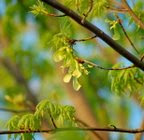Friday was a roller coaster of a day. We had the great privilege to have Jane Amidon visit for the day. She gave a lecture on the modern typology of the park open to the College of Architecture. Better yet, the LA department got to spend an hour with her in informal discussion. We peppered her with all sorts of theoretical and practical questions related to landscape architecture and architecture. Later that afternoon she sat in as a juror for the third studio/Parks. It was a long day. It is amazing how exhausting a day of thinking and mental processing can be.
Some thoughts for the day (a little off topic but greatly stimulated by the day) :
I have really been mentally debating my graduate project. I have two (and I’m very open to suggestions).
One is a mixed use project. 80 acres, residential, commercial, city park runs through it, creek runs through it, water front and marina. It is an abandon airport that needs a “new urbanism” master design.
Second is designing green belts and environmental corridors for Oklahoma City, overlaying the city using Michael Hough’s work as a precedent study.
Jane Amidon’s discussion and presentation was very inspiring. There is something that is very thrilling about having intelligent conversation and debate with someone that you esteem highly. (Thank you Jane!)
Education
1995 Harvard University, Master of Landscape Architecture
1988 Williams College, Bachelor of Art in History/focus in environmental and land use studies
Publications
· 2006
Source Books in Landscape Architecture 3: Peter Walker and Partners'Nasher Sculpture Center Garden ,
Amidon, Jane (Ed.). (2006). New York: Princeton Architectural Press.
2005
Source Books in Landscape Architecture 2: Ken Smith Landscape Architect/Three Urban Projects ,
Amidon, Jane (Ed.). (2005). New York: Princeton Architectural Press.
Source Books in Landscape Architecture 1: Michael Van Valkenburgh?s Allegheny Riverfront Park ,
Amidon, Jane (Ed.). (2005). New York: Princeton Architectural Press.
Moving Horizon: The Landscape Architecture of Kathryn Gustafson and Partners ,
Amidon, Jane. (2005). Basel: Birkhauser Press (English, German and French hardcover editions; Chinese paperback edition 2006)
2002
Ten Landscapes: Stephen Stimson Associates ,
Amidon, Jane. (2002). in J. Trulove (Ed.), Massachusetts: Rockport Press.
2001
Radical Landscapes: Reinventing Outdoor Space ,
Amidon, Jane. (2001). London and New York: Thames and Hudson (2001 hardcover edition); London and New York: Thames and Hudson; Frankfort: DVA; Madrid: Blume, (2003 foreign language hardcover and paperback edition).
1999
Dan Kiley: America?s Master Landscape Architect ,
Kiley, Dan & Amidon, Jane (1999). Boston: Bulfinch/Little, Brown; London: Thames and Hudson.
Teaching
2003-present Assistant Professor and Graduate Faculty Member
Knowlton School of Architecture, Landscape Architecture Section
Courses: design studios; contemporary history and theory in landscape architecture; graduate seminars; plants in design.













